The Digital Workplace
July 8, 2011
Staffing and recruiting professionals manage processes and interact with candidates and clients using electronic commerce. Whether Internet marketing, using e-mail or transferring funds into candidate accounts through direct deposit, you are using electronic commerce. This encompasses a wide range of technologies such as the “World Wide Web”, mobile devices and yes, even phones. But how do we make sense of this “virtual marketplace” and even more importantly what technologies should we choose?
Businesses face an automation challenge. Our world now functions with the use of automation. It’s become a way of life. Firms that do not integrate technology with business practices will be less competitive. Many companies mistakenly think that they are automated by implementing sales force automation software. Staffing firms using this type of software suffer from large functionality gaps. Usually a heavy amount of customization occurs in an attempt to adapt it to the organization. Still, it is unable to do the real job. This underscores the importance of implementing a fully integrated software model that is specifically designed for the recruiting and staffing industry.
It’s no big secret that technology enabled businesses are more successful. Those that strategically use technology to position themselves in the marketplace will capture more business and do better planning. This is especially important now that everyone is scrambling to revitalize revenue growth after it’s been stalled by the recent poor economy.
How do you know if your technology needs an overhaul? Do you question the effectiveness of your current software solution in terms of supporting your business goals and objectives? Is your software architecture disconnected with different groups using totally different software? Is there little communication between temp, direct hire or other groups such as medical staffing and accounting? Are a lot of your processes still manual? Are you unable to get detailed business reporting? If the answer is yes, then it is time to take action.
First, senior management must take control and define how the company will do business as a “digital workplace” to address the needs of a “digital economy”. Let’s face it – even grandma is on Facebook®. Your customers and candidates want to do business with a company that is efficient, timely and offers appropriate self-service tools to facilitate transactions. Your employees want and need software tools in order to be able to make the digital connections that are necessary to allow them to compete. You should use technology to transform business processes rather than just adding features to the same old processes.
A huge part of transforming business processes is “Customer Relationship Management” or “CRM”. CRM means an integrated process throughout the organization. This means that it spans across marketing, sales, operations and back office. This creates “standardization”. When the entire company operates in the same way, the total customer experience is consistent.
Another key is making sure that your digital strategy is actually implemented. Someone needs to take responsibility for implementation, or the strategy will fail. Often committees are set up for this purpose with no one “owner” that will take responsibility for the project. This is why automation projects so often fail.
What ensures success in a digital workplace? Although the concept may seem new, the reason for success is not. The most successful companies in the digital age are those that select digital applications that will provide the data needed to make business decisions. Productivity and profitability will naturally fall into place. It is all about the information. Are you ready to be data driven?
Improved business performance is the goal. When making technology decisions it’s not about the pretty screens, whether you want to be “in the cloud” or “out of the cloud”, how much it will cost or if your people want to make a change. Either way you look at it, your information needs must be addressed.
B2B marketing has changed. B2B relationships focus on people rather than companies. People do not want to “be sold”; they are looking for trusted business partners that could help them solve their business problems. Business to business marketing is different from consumer marketing. Consumer marketing does contain some solution selling, but B2B marketing is all about solution selling. The main emphasis is on providing value. So, the natural consequence is to implement a technology solution that will provide value to your customers.
It is important that you have the toolkit to enable the organization to become “digitally adept.” You need an integrated environment that bonds your front and back office operations and reaches out to candidates and customers. Your software solution should offer a harmonious relationship with social media, job boards, onboarding of candidates, portals to retrieve information and more. Some customers prefer emailed invoices. Can you offer that? Can you send out a text to candidates the moment their direct deposit is transferred? Can customers approve time on-line? These are all service items that people expect.
A “digital workplace” is no longer the workplace of the future. This is the way companies are operating now. A competitive company cannot afford to be without information. That information must be procured, housed and utilized to the full extent. Business forecasting models, electronic storage of documents, virtual communication, complete client and candidate profiles and more must all be available digitally in order to foster the most profitable and customer enabled environment.
This article was a Whitepaper published in SI Review, April 2011. www.staffingindustry.com
Terri Roeslmeier is President of Automated Business Designs, Inc., software developer of Ultra-Staff software for the staffing and direct hire industry. Ultra-Staff is a staffing software business solution with components for front office, back office and the web. Terri’s email address is TAR@abd.net or for more information on Ultra-Staff go to www.abd.net

